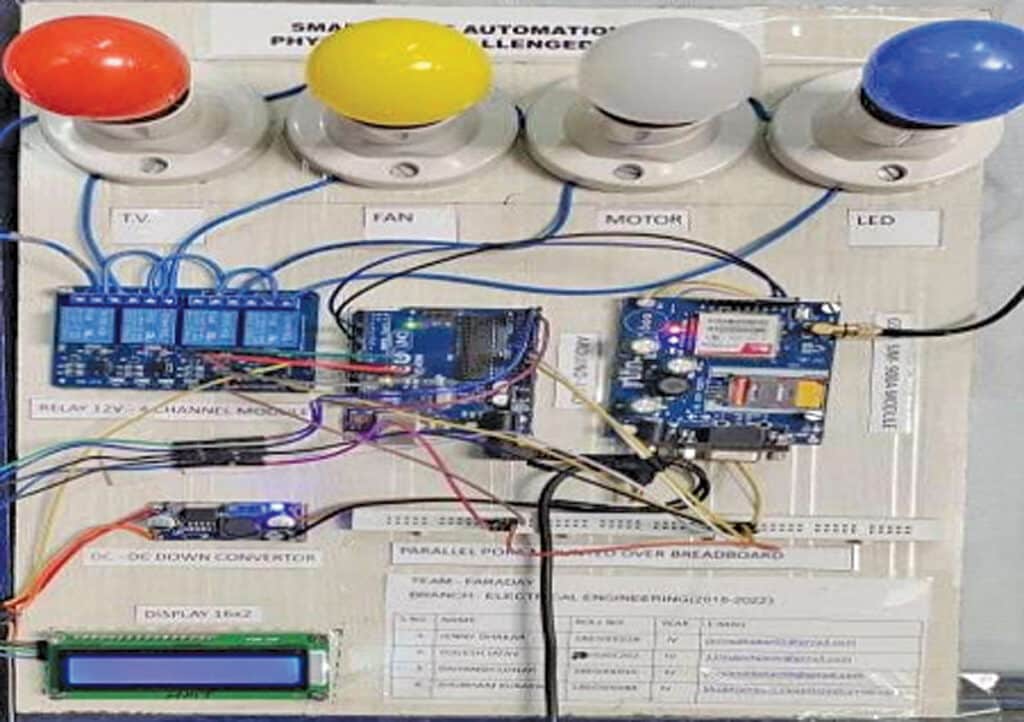
This smart switch for agriculture irrigation system comprises an Arduino board with a GSM module that is remotely controlled by a smartphone. Through this adaptive technology, users can easily monitor the working condition and operational mode of machinery used on their farms from any location, rather than traveling long distances to the field under unfavourable conditions. The main objective is to provide convenience to the farmers.
Fig. 1 displays the authors’ prototype on a breadboard. The components required to build this system are listed in the Bill of Materials table.
Also Check: Smart Agriculture Irrigation System

Smart Switch for Agriculture Irrigation – Circuit and Working
The circuit diagram of the smart switch for agricultural irrigation is shown in Fig. 2. As shown, the switch is constructed around a 50-watt solar panel, a solar charge controller, Arduino Uno board, GSM with GPRS Sim800l module, 16×2 LCD display, four-channel relay module, and a few other components.









